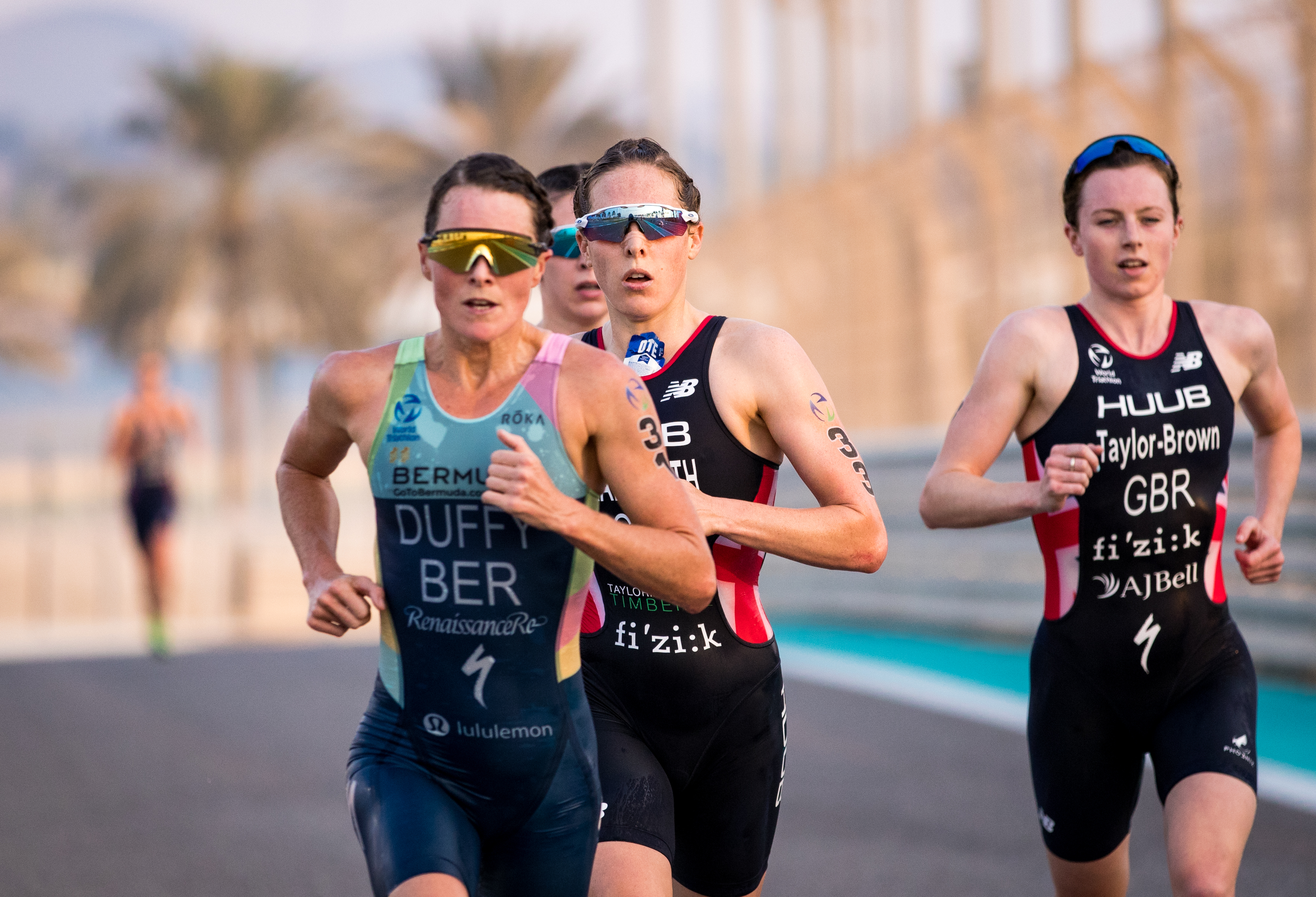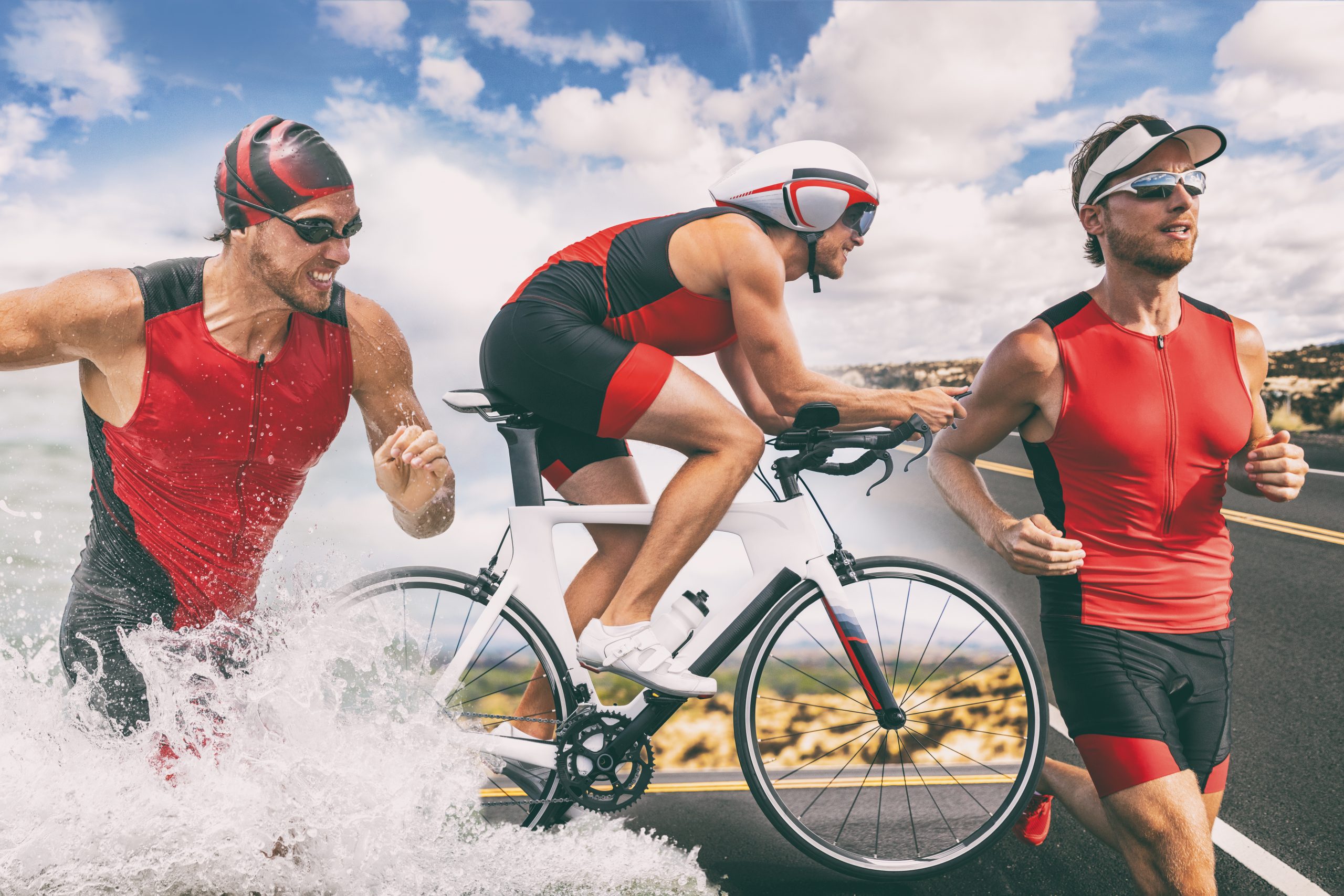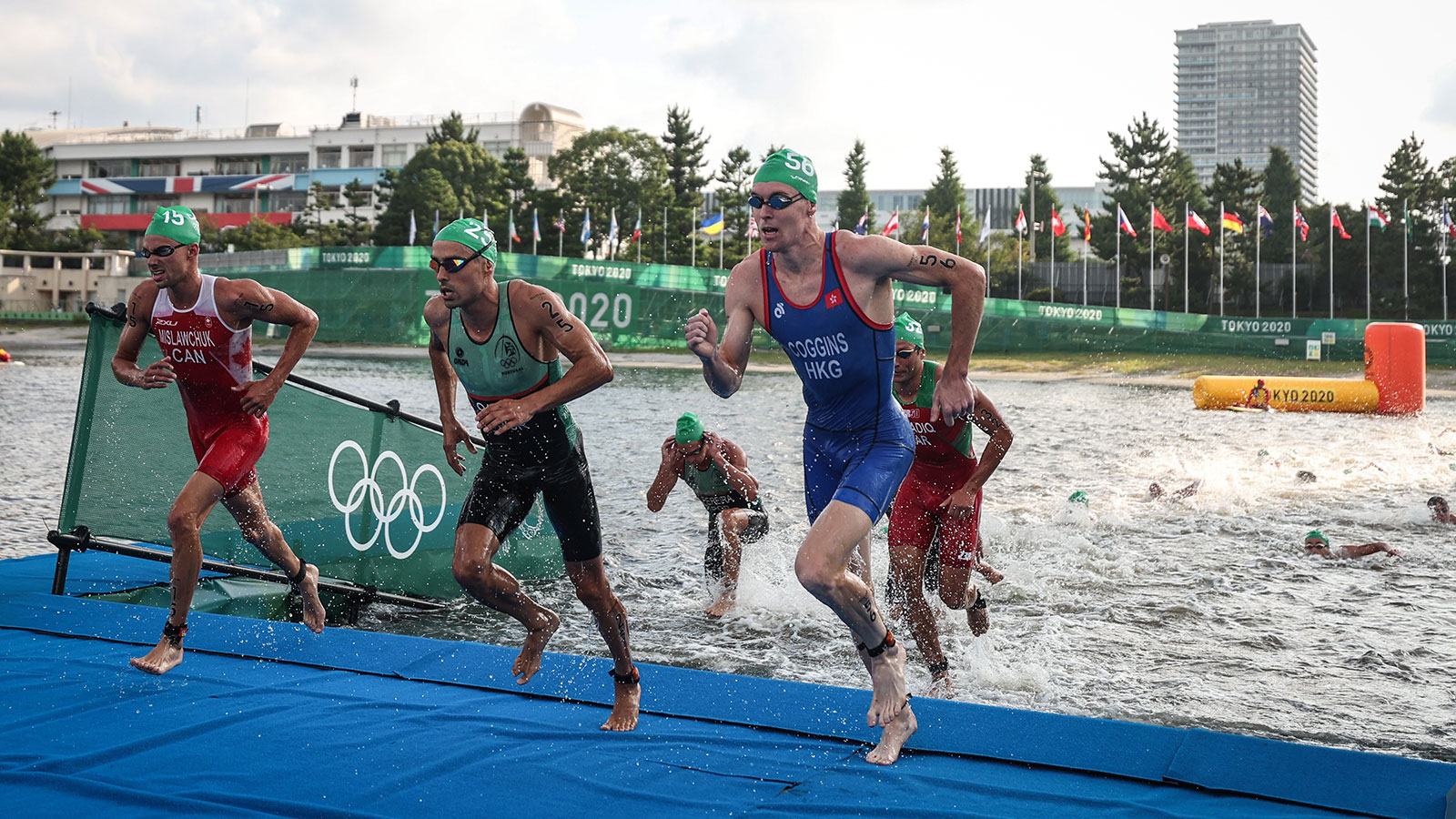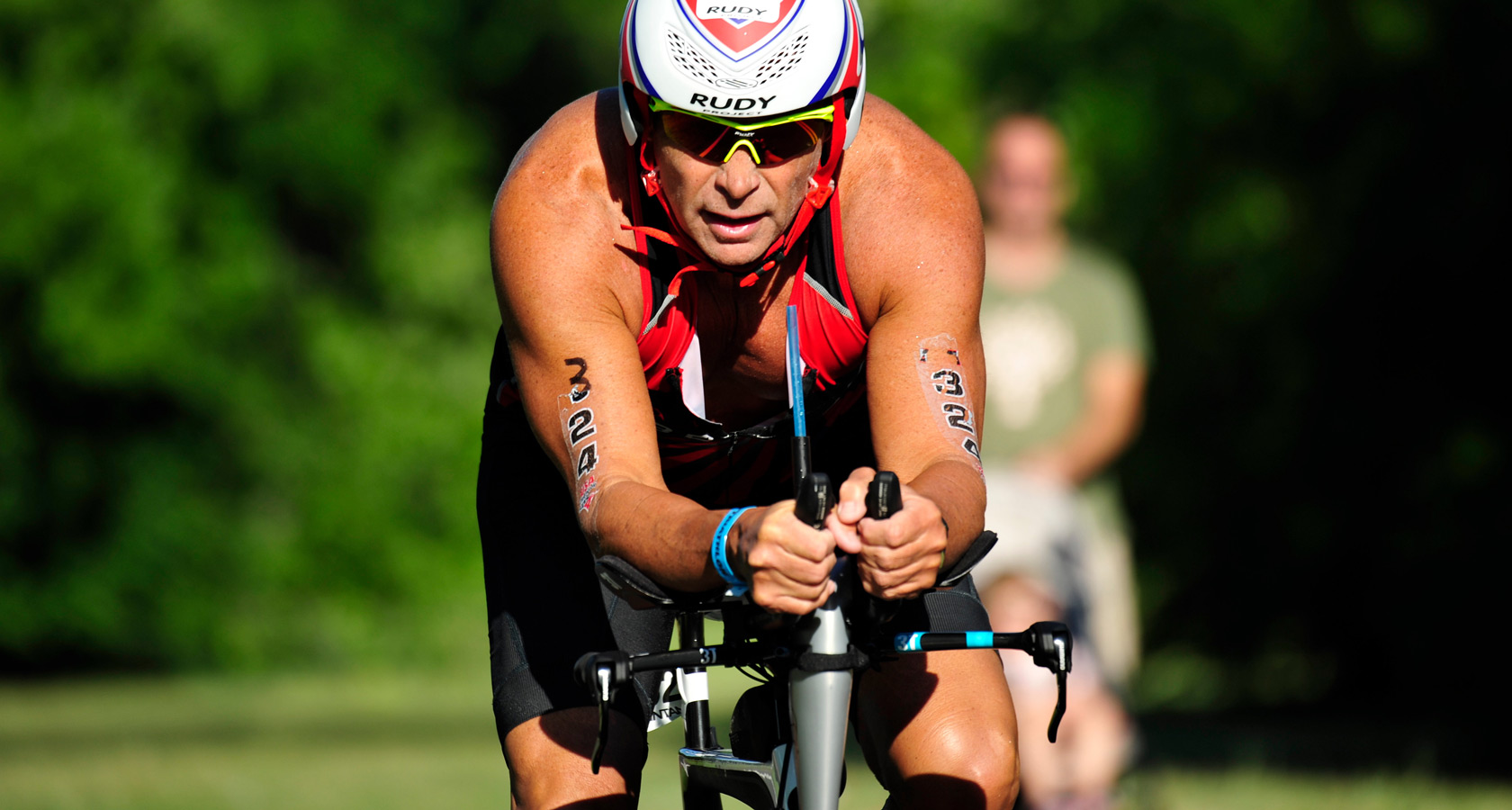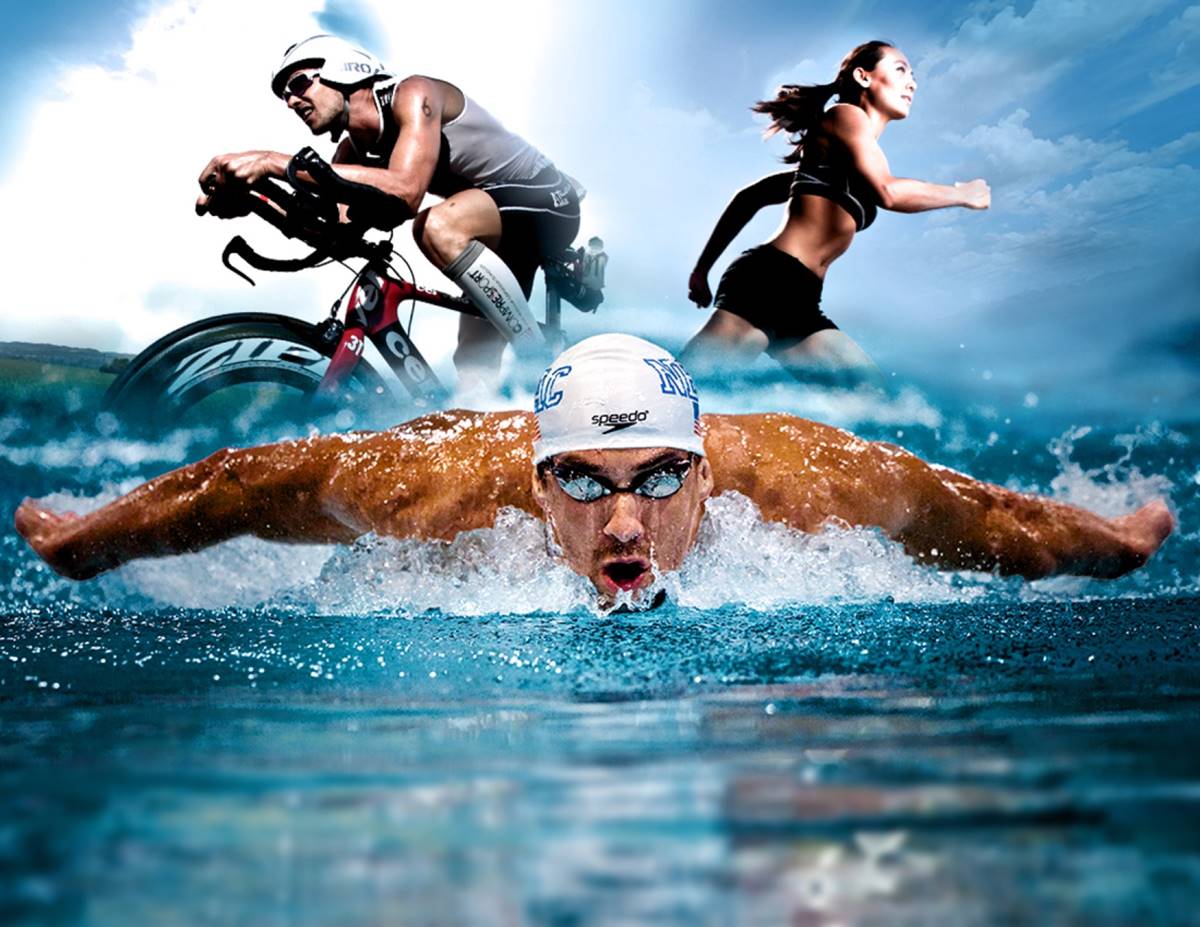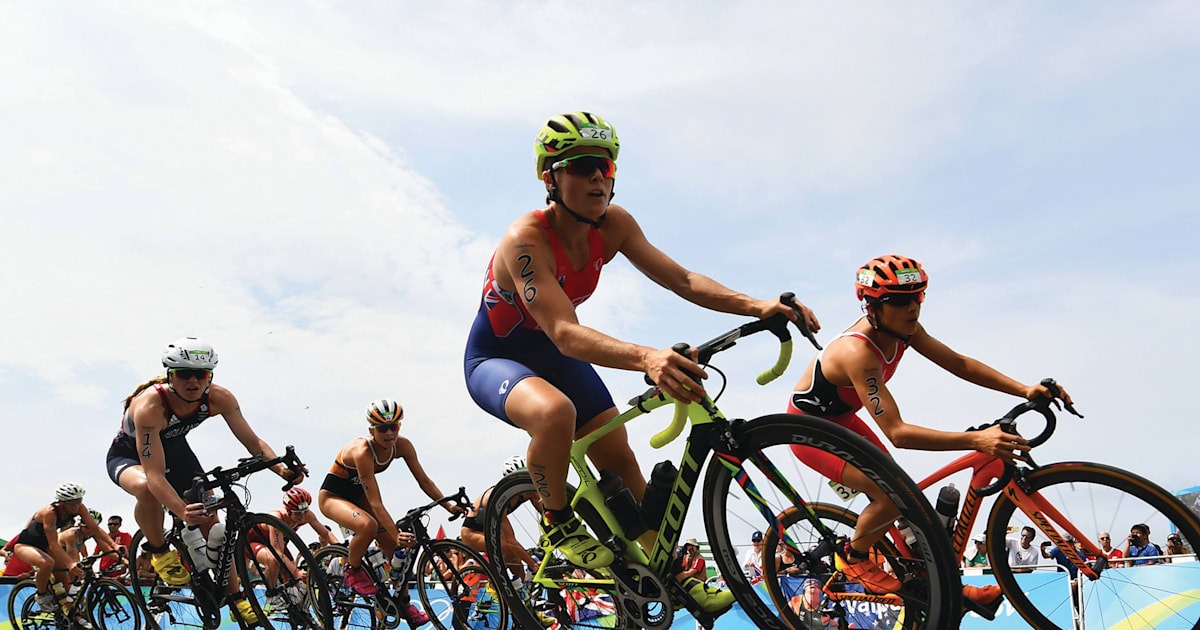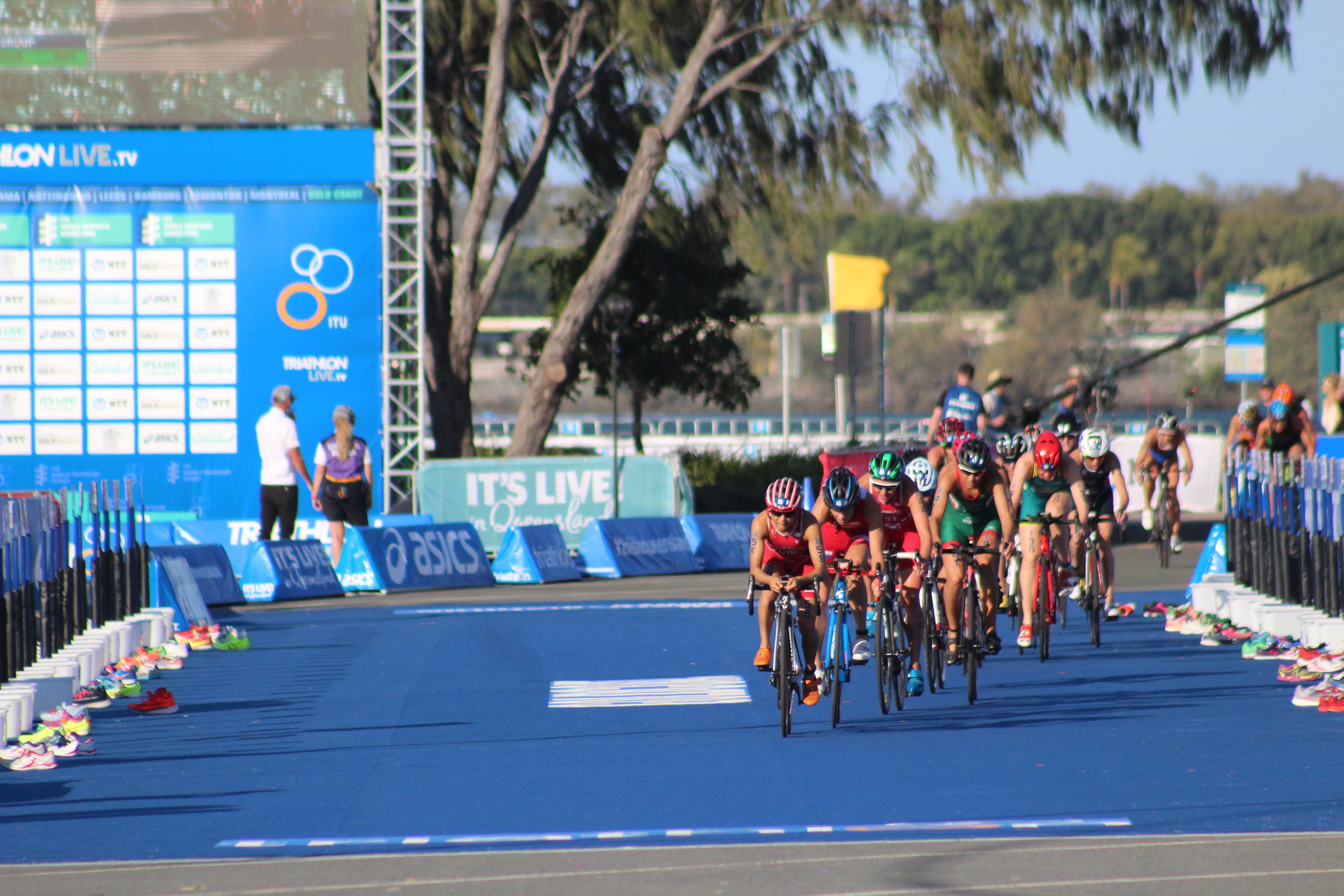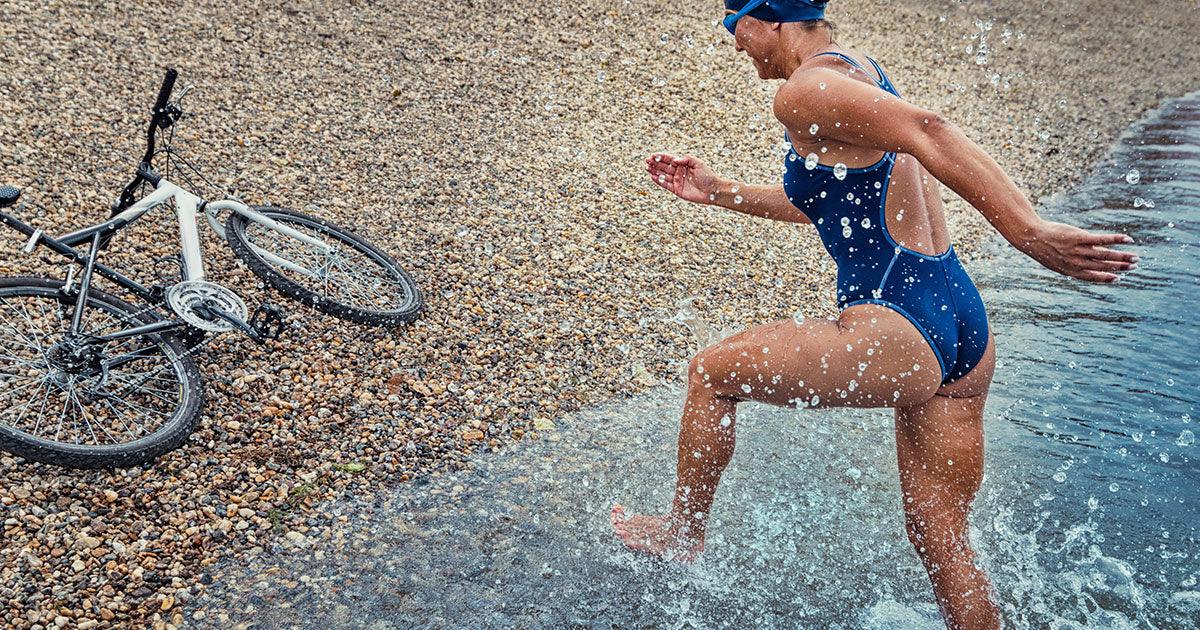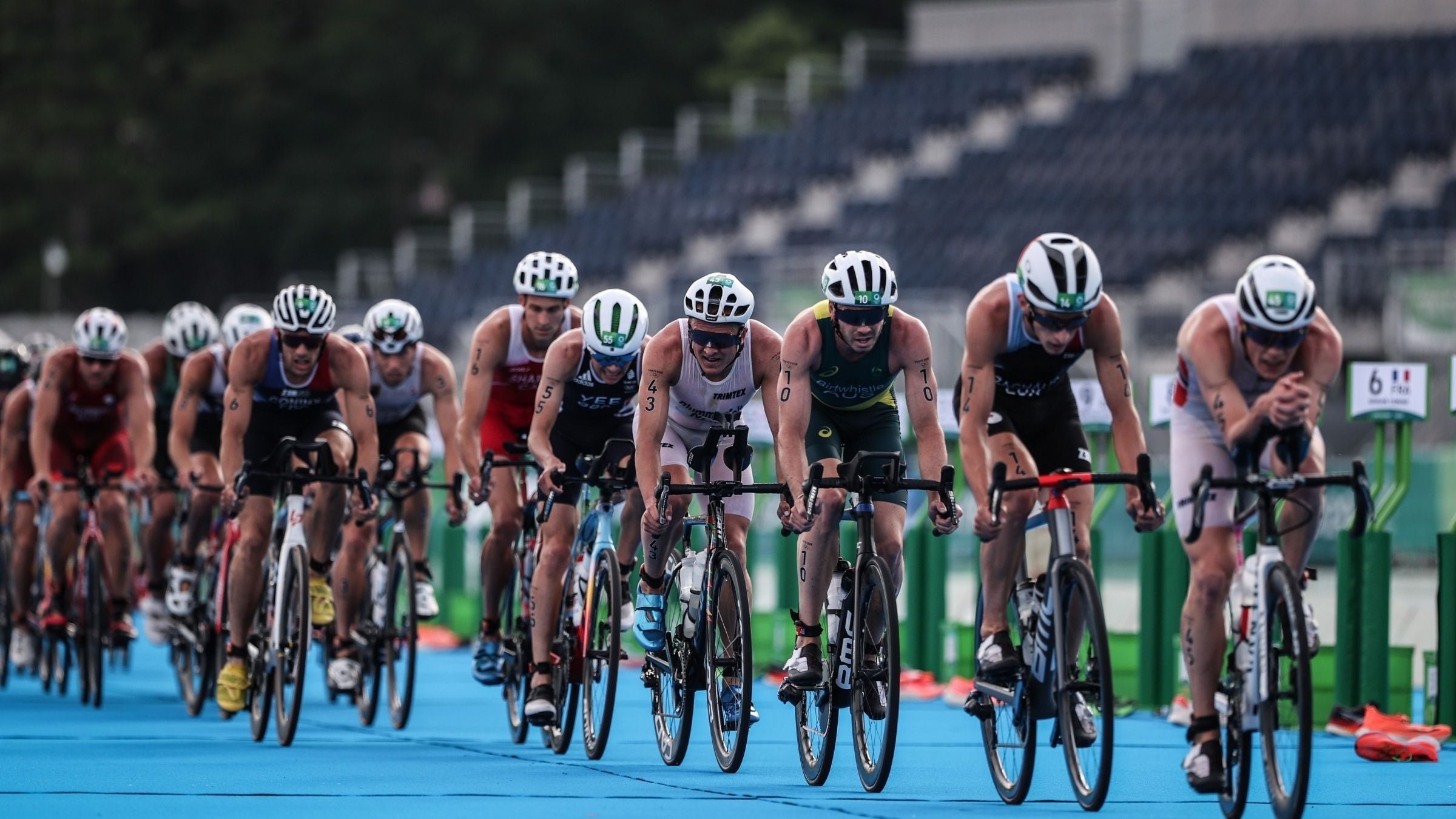

Featured
What Is Drafting In Triathlon
Modified: January 2, 2024
Learn what drafting is in triathlon and how it can impact your race. Find out the benefits and strategies of this featured technique.
Introduction
Welcome to the thrilling world of triathlon, where athletes test their endurance and skill in three disciplines: swimming, cycling, and running. Triathlon is a physically demanding sport that requires athletes to excel in all three disciplines to be successful. However, there is one aspect of triathlon that can have a significant impact on the outcome of a race – drafting.
Drafting, in the context of triathlon, refers to the strategy of closely following another athlete in order to reduce wind resistance and conserve energy. By positioning themselves closely behind the leading athlete, the trailing athlete can take advantage of the decreased wind resistance, effectively “drafting” off the leading athlete. This technique has become an integral part of triathlon racing, particularly in the cycling leg, where wind resistance plays a significant role.
With drafting playing such a crucial role in triathlon races, it is essential to understand the rules, strategies, and implications associated with it. In this article, we will explore the definition of drafting, delve into its history in triathlon, examine the rules and regulations governing drafting, and discuss the advantages and disadvantages of employing this technique. Additionally, we will explore drafting in different triathlon formats, discuss draft-legal triathlon events, and highlight the importance of drafting etiquette.
Whether you are a triathlete looking to improve your race performance or a spectator curious about the tactics involved in triathlon racing, this article will provide you with a comprehensive understanding of drafting in triathlon. So, get ready to dive into the world of drafting and discover how this strategy can make all the difference in a triathlon race.
Definition of Drafting
Drafting is a technique employed in triathlon, particularly in the cycling leg, where an athlete closely follows another athlete in order to reduce wind resistance and conserve energy. By positioning themselves in the slipstream of the leading athlete, the trailing athlete can benefit from the reduced air resistance and experience a decrease in drag force, allowing them to maintain a higher speed with less effort.
The concept of drafting is borrowed from the sport of cycling, where it is commonly used in road racing. In cycling, drafting is a well-known strategy utilized by riders to conserve energy during long races. When a cyclist rides directly behind another cyclist, the leading rider creates a “draft” that significantly reduces the wind resistance experienced by the trailing rider. This drafting effect can lead to energy savings of up to 30% and result in a faster overall race time.
In triathlon, drafting is particularly advantageous during the cycling leg, as it allows athletes to maintain a higher speed with less physical exertion. By riding in the slipstream of another athlete, the trailing cyclist gains an aerodynamic advantage, expending less energy to maintain the same speed as a cyclist riding alone. This energy conservation can be critical, as it allows the athlete to preserve their strength for the subsequent running leg of the triathlon.
It is important to note that drafting is not limited to just the cycling leg of triathlon. Although it is most commonly associated with the bike portion due to its greater impact on speed and efficiency, in some cases, drafting can also be used during the swimming leg of a triathlon. Swimmers can draft off the athlete in front of them by positioning themselves just behind and slightly to the side, allowing them to benefit from the leading swimmer’s wake and reduce water resistance. This technique can save energy during longer swims and provide a competitive advantage.
Overall, drafting is a strategic technique in triathlon that involves closely following another athlete to reduce wind resistance and conserve energy. It is a valuable tool for triathletes aiming to optimize their performance and achieve their best possible race time.
History of Drafting in Triathlon
The history of drafting in triathlon can be traced back to the early days of the sport, when athletes were still experimenting with race strategies to maximize their performance. Drafting was first introduced in the late 1980s as a way to replicate the tactics used in cycling road races and provide a more dynamic and exciting aspect to triathlon competitions.
Initially, drafting was not widely accepted or regulated in triathlon races. Athletes would often form unofficial packs and work together to gain an advantage, leading to a somewhat chaotic and unpredictable racing environment. However, as the popularity of triathlon grew and the sport became more organized, rules were implemented to standardize the practice of drafting and ensure fair competition among athletes.
In 1997, the International Triathlon Union (ITU), the governing body of the sport, established specific rules regarding drafting in international triathlon races. These rules aim to create a level playing field and prevent athletes from gaining an unfair advantage. The ITU introduced a minimum distance that athletes must maintain from the cyclist in front of them, known as the drafting zone. This distance is typically between 7 and 10 meters, varying depending on the race format and level of competition.
While the drafting rules established by the ITU apply to most triathlon events, there are exceptions. In some races, particularly long-distance or non-drafting races, athletes are not allowed to draft and must maintain a safe distance from each other at all times. These races focus more on individual performance rather than the strategic aspect of drafting.
In recent years, drafting has become increasingly prevalent, especially in shorter triathlon formats. Draft-legal races, such as those in the Olympic triathlon format, allow athletes to benefit from drafting. These races promote a faster and more dynamic style of competition, with athletes forming packs and working together to gain an advantage. Draft-legal races have gained popularity among both professional and amateur triathletes who enjoy the strategic element and increased competitiveness associated with drafting.
Overall, the history of drafting in triathlon reflects the evolution and growth of the sport. From its experimental beginnings to the establishment of standardized rules, drafting has become an integral part of the triathlon racing experience, bringing excitement, strategy, and increased competition to the sport.
Drafting Rules and Regulations
With the aim of ensuring fair competition and a level playing field, drafting in triathlon is governed by specific rules and regulations. These rules, established by the International Triathlon Union (ITU), outline the allowable distance and proper behavior that athletes must adhere to during the bike leg of a race.
The main rule regarding drafting in triathlon is the establishment of a designated drafting zone. This zone is typically between 7 and 10 meters and is measured from the leading edge of the front wheel of the bike in front to the leading edge of the front wheel of the trailing bike. Athletes are not allowed to enter this zone unless they are overtaking or passing another athlete. The drafting zone acts as a buffer, ensuring that athletes maintain a safe distance from each other and preventing them from gaining an unfair aerodynamic advantage.
It is important for athletes to be aware of their positioning within the drafting zone to avoid penalties. If an athlete is caught drafting, they may receive a time penalty, a warning card, or even disqualification, depending on the severity of the infraction and the rules of the specific race. Drafting penalties are enforced by officials stationed along the racecourse, who closely monitor the cyclists and issue penalties when necessary.
Officials may also use other methods, such as video technology, to ensure accurate enforcement of drafting rules. This allows them to review footage and identify instances of drafting that may not have been immediately apparent during the race. The use of technology adds an extra layer of fairness and transparency to the drafting regulations.
It is worth noting that the drafting rules may vary depending on the race format and level of competition. In non-drafting races, athletes must maintain a minimum distance at all times and are not allowed to draft. These races place a greater emphasis on individual performance and require athletes to rely solely on their own strength and strategy rather than benefiting from drafting tactics.
Understanding and adhering to the drafting rules and regulations is crucial for triathletes participating in races where drafting is allowed. By following these rules, athletes can ensure fair competition and avoid penalties that may compromise their race results. Additionally, it is essential for athletes to familiarize themselves with the specific drafting rules of each race they participate in, as they may vary slightly depending on the event organizers and governing bodies.
Strategies and Tactics in Drafting
Successfully employing drafting techniques in a triathlon requires careful strategy and tactical decision-making. Athletes must consider various factors such as race distance, course conditions, wind direction, and the abilities of other competitors. By understanding these elements, athletes can maximize the benefits of drafting and gain a competitive advantage on the bike leg of the race.
Choosing the Right Wheels
One crucial aspect of drafting is selecting the right wheels for the race. Aerodynamic wheels with a deeper rim profile can significantly reduce air resistance, allowing the cyclist to maintain higher speeds with less effort. These wheels are particularly advantageous when riding in a pack or drafting behind other athletes. However, it is important to balance aerodynamics with stability, as deeper rims can be more susceptible to crosswinds.
Positioning within the Pack
Positioning within the pack is another crucial element of drafting strategy. Athletes should aim to ride in the middle or towards the front of the group, as the athletes at the front set the pace and provide a more consistent draft. Being towards the front also allows for better visibility of the road ahead, enabling prompt reactions and maneuvering in case of any obstacles or changes in the race dynamics.
Strategic decision-making is vital when approaching corners or hills. By positioning oneself towards the front of the pack before an uphill section, an athlete can take advantage of the inertia and momentum from those behind, making it easier to maintain speed and prevent others from passing. Similarly, before entering a technical section or a sharp corner, athletes should aim to be near the front to have more control over their line and avoid getting caught in any potentially risky situations.
Communication and Collaboration
Drafting often involves riding in close proximity to other athletes. Therefore, clear communication and collaboration within the group are essential for a smooth and efficient drafting strategy. Athletes can communicate their intentions through verbal cues, such as announcing when they are overtaking or indicating upcoming hazards on the course. Non-verbal signals, such as hand gestures or pointing, can also be used to communicate effectively within the pack.
Collaboration is also key in maintaining a successful drafting group. Athletes can take turns at the front, sharing the workload and allowing each cyclist to conserve energy before their next stint. This rotation not only promotes fairness but also helps maintain a steady pace throughout the race.
Surge and Sprint Tactics
Strategically timed surges or sprints can be used to break away from or exhaust the drafting group. By increasing the pace for a short period, an athlete can create a gap that discourages others from following immediately. However, implementing this tactic requires careful timing and consideration of one’s own capabilities, as well as the strengths and weaknesses of other athletes in the group.
Ultimately, successful drafting strategy requires a combination of technical skill, tactical decision-making, and effective communication within the group. By understanding and implementing these strategies, triathletes can optimize their performance during the bike leg and maintain an edge over their competitors.
Advantages and Disadvantages of Drafting
Drafting, when used effectively, can provide significant advantages for triathletes during the cycling leg of a race. However, it is important to consider both the benefits and drawbacks associated with this strategy. Let’s explore the advantages and disadvantages of drafting in triathlon.
Advantages of Drafting
1. Reduced Wind Resistance: One of the primary benefits of drafting is a decrease in wind resistance. By closely following another athlete, the trailing cyclist can take advantage of the slipstream and experience a significant reduction in drag. This reduction in wind resistance allows the athlete to maintain a higher speed with less effort, conserving valuable energy for other parts of the race.
2. Efficiency: Drafting not only reduces wind resistance but also promotes efficiency in cycling. By riding in the draft of another athlete, the trailing cyclist can conserve energy by expending less effort to maintain the same speed. This energy conservation is particularly valuable in longer races or multi-discipline events like triathlon, where athletes must preserve their strength for subsequent legs, such as the run.
3. Strategic Collaboration: Drafting promotes collaboration and strategic decision-making within a group of cyclists. Athletes can work together by taking turns leading and sharing the workload, thereby fostering a cooperative and competitive environment. This collaboration can lead to a more dynamic and exhilarating race, spurring on the participants to push their limits and achieve faster times.
Disadvantages of Drafting
1. Potential for Collisions: Riding in close proximity to other athletes increases the risk of collisions and accidents. Quick reactions and precise bike handling skills are essential to navigate turns and obstacles safely. Any lapse in focus or miscommunication within the group can lead to a crash, potentially causing injury and negatively impacting race performance.
2. Penalties for Drafting Violations: Adhering to drafting rules is vital to avoid penalties, time deductions, or even disqualification from the race. Athletes who fail to maintain the appropriate distance from the cyclist in front or engage in unsportsmanlike behavior can face severe consequences that affect their overall standings and race results.
3. Dependency on Group Dynamics: Drafting requires the presence of a group of cyclists to be effective. Athletes who are unable to find or join a drafting group may not be able to reap the benefits of reduced wind resistance and energy savings. Solo riders may find it more challenging to maintain a consistent and efficient pace compared to those riding in a group.
It is essential for triathletes to carefully consider these advantages and disadvantages when deciding whether to employ drafting strategies. Factors such as race distance, course conditions, individual skill level, and competition level should all be taken into account to determine the most appropriate approach for each race.
Drafting in Different Triathlon Formats
Triathlon races come in various formats, each with its own rules and regulations regarding drafting. Understanding the drafting guidelines specific to each format is crucial for triathletes to strategize and optimize their performance. Let’s explore drafting in different triathlon formats.
Sprint and Olympic Distance Triathlons
In Sprint and Olympic Distance triathlons, drafting is generally allowed and even encouraged. These races often follow draft-legal rules, meaning athletes can benefit from riding in packs and working together to gain an advantage. This format adds an extra level of strategy and excitement to the race as athletes must negotiate their position within the pack, strategically overtake competitors, and maintain optimal drafting positions to conserve energy.
The drafting zone in Sprint and Olympic Distance triathlons is typically between 7 and 10 meters, ensuring a fair and competitive racing environment. Athletes must constantly be aware of their positioning and ensure they are maintaining the appropriate distance to avoid penalties.
Long-Distance Triathlons
In long-distance triathlons, also known as Ironman or Iron-distance races, drafting is generally not permitted. These races prioritize individual performance and self-reliance, with athletes competing against the clock rather than engaging in strategic pack riding. In such races, athletes must maintain a safe distance from one another at all times and are not allowed to benefit from drafting off other competitors.
With the absence of drafting, long-distance triathlons require athletes to rely solely on their own strength, endurance, and strategic decision-making. The ability to pace oneself, conserve energy, and maintain a suitable nutrition and hydration plan becomes critical to success in these races.
Non-Drafting Races
Non-drafting races encompass a variety of triathlon formats, including some Olympic and long-distance races. In these events, athletes must maintain a minimum distance between themselves and the cyclist in front at all times, typically ranging from 10 to 12 meters. This distance ensures that each athlete is responsible for overcoming their own wind resistance, placing a greater emphasis on individual performance and limiting the advantage gained from drafting.
Non-drafting races require athletes to focus on their own pacing strategies, time trial efforts, and maintaining a consistent speed and effort throughout the bike leg. It becomes more about personal discipline and the ability to sustain a strong effort without the support of a drafting pack.
It is crucial for triathletes to familiarize themselves with the specific drafting rules and regulations of each race they participate in. Understanding the format and drafting guidelines allows athletes to tailor their training and racing strategies accordingly, taking advantage of the opportunities presented by drafting or honing their individual performance in non-drafting races.
Draft-Legal Triathlon Events
Draft-legal triathlon events have gained popularity in recent years, attracting both professional and amateur athletes who enjoy the dynamic and strategic nature of these races. In contrast to non-drafting races, draft-legal events allow triathletes to benefit from drafting off other competitors, leading to faster and more exciting races. Let’s take a closer look at draft-legal triathlon events.
In draft-legal races, such as those following the Olympic triathlon format, athletes are allowed to ride in packs and take advantage of the aerodynamic benefits of drafting. This format simulates the tactics and dynamics of cycling road races, adding an extra element of strategy to the triathlon discipline.
Draft-legal triathlon events create a more dynamic and intense racing environment. Athletes strategically position themselves within the pack, taking turns at the front to share the workload and conserve energy. This collaboration and teamwork not only enhances the race experience but also fosters a competitive atmosphere that pushes athletes to their limits.
One of the key benefits of draft-legal racing is the increased likelihood of a lead change. With drafting allowed, athletes have the opportunity to work together to bridge gaps between competitors or launch attacks to create separation from the pack. This leads to more frequent position changes, making the race exciting for both participants and spectators.
Draft-legal triathlon events also provide a valuable learning experience for aspiring triathletes. Athletes competing in these races have the opportunity to develop their drafting skills, master tactical decision-making, and gain a better understanding of race dynamics. This knowledge can be applied to other racing formats and improve overall performance in triathlon.
Furthermore, draft-legal races often attract a high level of competition, including elite athletes from around the world. The intense and fast-paced nature of these events creates an optimal platform for athletes to challenge themselves, benchmark their skills against the best in the field, and potentially qualify for higher-level competitions.
It is important to note that draft-legal racing may have stricter rules and regulations compared to non-drafting races. Athletes must adhere to the drafting zone regulations, maintain appropriate distances, and avoid unsportsmanlike behavior. Penalties for drafting violations can result in time deductions or disqualification, so it is critical for athletes to be familiar with and abide by the specific rules of each event.
Overall, draft-legal triathlon events bring a new dimension to the sport, promoting strategic collaboration, dynamic racing, and increased competitiveness. Participants can enjoy the benefits of drafting, refine their tactical skills, and immerse themselves in a challenging and exhilarating race experience.
Drafting Etiquette
When participating in a draft-legal triathlon or any race where drafting is permitted, it is essential for athletes to adhere to proper drafting etiquette. Following established drafting etiquette not only promotes fair and safe racing but also ensures a positive and enjoyable experience for all participants. Let’s explore some key aspects of drafting etiquette in triathlon.
Maintain Distance
Respecting the drafting zone is a fundamental aspect of drafting etiquette. Athletes should maintain the appropriate distance from the cyclist in front to avoid penalties. Straying too close to the leading athlete can disrupt their rhythm and impede their own ability to navigate the course effectively.
Communicate and Signal
Clear communication is crucial when riding in a drafting pack. Athletes should use verbal cues or hand signals to communicate their intentions, such as announcing they are overtaking or indicating potential hazards or obstacles on the course. Non-verbal signals, like pointing or gesturing, can also be effective in ensuring effective communication within the group.
Rotate and Share the Workload
In a drafting pack, it is important for all participants to share the workload by taking turns at the front of the group. This rotation allows each athlete to benefit from the drafting advantage while also sharing the effort required to maintain the pace. Collaborative teamwork enhances the overall race experience and promotes fair competition.
Avoid Blocking
Avoiding blocking or impeding the progress of other athletes is essential in drafting etiquette. Riders should make an effort to remain predictable and maintain a steady line, especially when changing positions within the group. Abrupt changes in speed or swerving can cause unnecessary disruptions and potentially lead to accidents or collisions.
Be Mindful of Safety
Safety should always be a top priority when participating in drafting races. Athletes should be vigilant and maintain situational awareness, especially in crowded or technical sections of the course. Additionally, it is crucial to have proper bike handling skills and the ability to react quickly to avoid collisions with other riders or obstacles on the route.
Show Respect to Competitors
Respect for fellow competitors is an integral part of drafting etiquette. Athletes should avoid unsportsmanlike behaviors such as intentional blocking, drafting too closely, or engaging in any form of unsportsmanlike conduct. Respectful and fair competition enhances the overall experience of the race for all participants.
By following these guidelines and demonstrating proper drafting etiquette, triathletes can create a supportive and enjoyable racing atmosphere. Drafting becomes a collaborative effort where all participants can benefit from the strategic advantage of riding in a pack while maintaining a fair and competitive environment.
Drafting in Elite Triathlon Races
In elite triathlon races, such as those in the ITU World Triathlon Series or the Olympic Games, drafting plays a significant role in the outcome of the competition. The world’s top triathletes strategically utilize drafting to gain a competitive advantage and push their limits to achieve their best possible performance. Let’s delve into the importance of drafting in elite triathlon races.
Increased Tactical Complexity
Elite triathlon races are characterized by intense competition and high-level strategy. Athletes strategically position themselves within the lead pack, carefully calculating their moves and considering the strengths and weaknesses of their competitors. Drafting becomes a pivotal element in the tactical chess match, as athletes aim to conserve energy while maintaining optimal positioning for crucial moments in the race.
Dynamic Pack Riding
Elite triathletes excel in pack riding skills, seamlessly navigating through the group while maintaining an efficient pace. The lead pack may consist of a small group of athletes fiercely vying for the lead, constantly adjusting their positioning to capitalize on drafting benefits. The dynamics of the pack can change rapidly as athletes surge, break away, or react to moves made by their rivals.
Strategic Surges and Attacks
Drafting in elite triathlon races often involves strategic surges and attacks designed to break away from the pack or gain an advantage over competitors. Athletes may employ well-timed accelerations to test their rivals and push the pace, aiming to drop weaker riders or disrupt the rhythm of the pack. These tactical moves require split-second decision-making, calculated risk-taking, and a deep understanding of an athlete’s own capabilities.
Race-Specific Course Strategies
Elite triathletes meticulously study the course profile and conditions to develop race-specific strategies. Factors such as wind direction, ascents, descents, and technical sections significantly impact drafting tactics. Athletes may strategically position themselves to take advantage of tailwinds or minimize the effects of crosswinds. They plan their efforts to make crucial moves on climbs or capitalize on technical sections to gain an edge over their rivals.
Elevated Importance of Drafting Skills
In elite triathlon races, the ability to draft effectively is paramount. Athletes spend countless hours honing their drafting skills, both in training and in simulated race scenarios. They fine-tune their positioning, bike handling, and decision-making to maximize the drafting advantage while maintaining a high level of situational awareness and adaptability.
Thrilling Spectacle for Fans
For spectators, elite triathlon races featuring drafting are an exciting spectacle to watch. The tactical battles, fast-paced cycling, and position changes within the pack make for a thrilling viewing experience. The close proximity of athletes within the drafting pack creates a sense of anticipation, as fans eagerly await explosive surges, breakaways, or thrilling sprint finishes.
Overall, drafting plays a paramount role in elite triathlon races, shaping the outcome of the competition. The combination of precise positioning, calculated strategy, and technical skills make drafting an essential element in the pursuit of victory at the highest level of triathlon.
Conclusion
Drafting is a strategic technique in triathlon that allows athletes to reduce wind resistance, conserve energy, and optimize their performance during the cycling leg of a race. Whether it’s sprint and Olympic distance triathlons, long-distance races, or draft-legal events, understanding the rules and strategies associated with drafting is crucial for athletes to excel in their races.
Drafting provides numerous advantages, including reduced wind resistance, improved efficiency, and collaborative teamwork within a drafting pack. It allows athletes to maintain higher speeds while conserving energy, providing a competitive edge. However, drafting also poses challenges such as the risk of collisions, penalties for drafting violations, and the need for effective communication and cooperation within the pack.
Triathletes must familiarize themselves with the specific drafting rules and regulations of each race they participate in. Adhering to proper drafting etiquette, maintaining appropriate distance, signaling intentions, and sharing the workload are vital for fair and enjoyable racing experiences.
Elite triathlon races showcase the pinnacle of drafting strategy, with top performers utilizing tactical complexity, pack riding skills, and strategic surges to gain a competitive advantage. In these races, drafting becomes a crucial element that shapes the outcome and captivates spectators with the thrilling dynamics of the race.
Ultimately, drafting enhances the excitement and competitiveness of triathlon, providing athletes with strategic opportunities to optimize their performance and achieve their race goals. By mastering the art of drafting and understanding its nuances, triathletes can elevate their racing abilities and embrace the dynamic and exhilarating nature of the sport.
